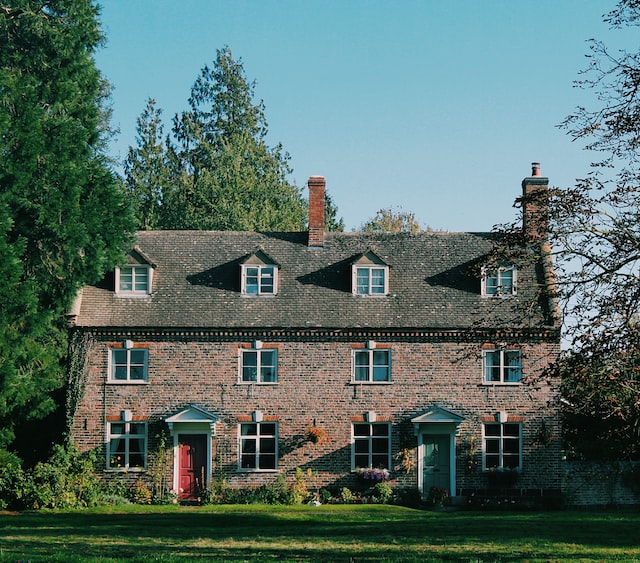Converting your loft space into a room that’s fit for occupation is a big task. There are many considerations that you must make before beginning any work, they can take many weeks to complete, and they are an expensive investment.
Once complete, however, a well-constructed loft conversion will add significant value to your property, and it will leave you with a brand-new storey in your house which you can take advantage of.
Carry on reading for more on what loft conversions are available with The Loft Doctor and how your property type can influence what conversions you are eligible for.
There a number of different types of loft conversions that are permitted in the UK. While you may have a preferred type, ultimately this can end up being decided for you by the dimensions of your property, its loft dimensions, and its roof.
Here are some of the most common types of loft conversions for properties in the UK.

Your content goes here. Edit or remove this text inline or in the module Content settings. You can also style every aspect of this content in the module Design settings and even apply custom CSS to this text in the module Advanced settings.
Dormer loft conversion
Dormer loft conversions are some of the most common types of substantial loft conversions seen in the UK on properties with pitched roofs. They are relatively cheap (where loft conversions are concerned), and they very often fall within standard permitted development.
These types of conversions are when a right-angled structure extends out from the roof pitch, increasing the volume in your loft space by offering you more headspace. This means that you would be able to stand where you previously couldn’t due to the slope of the roof.
There are different types of dormer loft conversions that you can have. For example, they can either be built in sections with a single window or can extend the width of your roof where they will add even more headspace, or they can be built with different roof styles. The most common are:
- Flat roof dormer extension
- Dog house dormer extension
- Shed dormer extension

Mansard loft conversion
Mansard loft conversions are similar to dormer loft conversions in that they extend out from the roof pitch, but these loft extensions are built with a 72o vertical pitch so that they slope slightly as opposed to dormer extensions that come with a 90o pitch.
With a mansard loft conversion, you can get the most out of your loft space by maximising usable volume. And you also have a choice of installing skylights or dormer-style windows for additional headspace.
Mansards can be more expensive than dormers, and there are occasions where planning permission may need to be acquired before work can begin. We can advise on whether this will affect you and your property after giving your house a full inspection and loft healthcheck.
L-shaped loft conversions are a type of dormer extension, except with these you will have much more usable loft space. However, only specific properties will be eligible for an L-shaped loft conversion.
Houses with a standard couple pitched roof will not be able to receive an L-shaped conversion. Instead, these conversions are exclusive to Victorian or Edwardian style-properties that come with a built-up addition at the rear.
An L-shaped loft conversion forms an L shape by building dormer extensions on the rear pitch of the main roof and then extending onto the rear addition of the property.
Expect to receive a substantial increase to your usable loft space if you opt for an L-shaped conversion, with plenty of natural light through a combination of skylights and windows.
Hip to gable loft conversions involve a significant change to the structure of your loft by completely altering the category of roof your property has.
Gable roofs that are found in the majority of mid-20th-modern properties come with a standard couple pitched roof that sloped at the front and the rear, creating an A-shape when viewed from the side.
Hipped roofs, which are commonly found on certain properties predating the mid-20th century, have more than two pitches, with a pitch on the side (or sides) of the property as well as the front and the rear, creating a pyramid shape when viewed from the side.
Properties with hipped roofs come with impractical loft space as there is very little headroom throughout the whole loft. A hip to gable conversion creates a flat gable wall on one side of the property, transitioning the roof from a hipped roof to a gable roof and, as a result, adding more headspace into the loft and making it suitable for occupation.
Many hip to gable conversions also combine with the installation of a dormer loft extension at the rear of the property to efficiently make the most of the loft conversion construction and maximise loft volume.
Most residential houses can have some form of loft conversion. Although some properties may have restrictions on what type of conversions that they are eligible for.
Regardless of what type of property your house is, there are a few requirements for your house to be eligible for a loft conversion. These include:
- A minimum of 2.2m from the loft floor to its highest point
- A maximum pitch of 42 degrees on the staircase leading to the loft
- A minimum of 1.9m height over the staircase leading to the loft
Yes, terraced houses can have loft conversions.
Many terraced houses come with couple pitched roofs which make them perfectly suited for rear dormer conversions.
Structural party walls on either side can even make the conversion simpler than others, but do mean that your neighbours will have to be made aware of your plans before starting work.
Yes, semi-detached houses can have loft conversions, although you may be limited by choice depending on your roof shape.
If your semi-detached or end of terrace property has a hipped roof then a hip to gable loft conversion will be needed, but this can be combined with a rear dormer conversion at the same time.
If your semi-detached or end of terrace property has a gable roof then you are not restricted on your choice of loft conversion.

Yes, detached houses can have loft conversions.
Fortunately for detached property owners, most detached properties are suitable for any type of loft conversion. Although, as mentioned previously, the style of roof that you have may influence what detached house loft conversions you are eligible for.
Yes, it is possible for a bungalow to have a loft conversion.
You may be surprised to hear that there are actually many different loft conversions that your bungalow may be eligible for. This is because bungalows often come with plenty of floor space on the ground floor, leaving the opportunity to take advantage of this floor space by building up into the loft. Although you of course may still be restricted by the shape of your roof.
Or, if a full-storey loft conversion is not for you, then a Velux conversion can increase the volume of your ground floor and bring in plenty of natural light.
Convert your loft with The Loft Doctor
If you want to take full advantage of your loft space and want more than your standard boarding and insulation, then get in touch with our team at The Loft Doctor by filling in our quote form and we will get back to you as soon as possible.
We will take some information about your property and then come out to conduct a loft healthcheck to ensure that your loft is fit for conversion before beginning any work. Not only is this paramount for safety, it also helps us complete our work as quickly and efficiently as possible, leaving you to enjoy your brand-new loft sooner rather than later!

